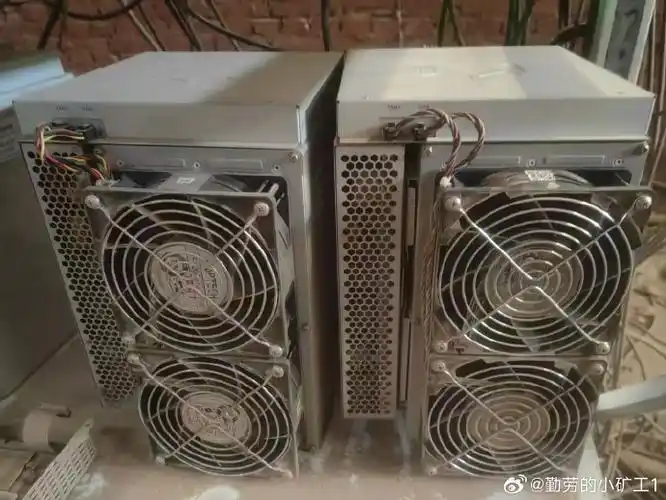The cryptocurrency landscape is a dynamic and ever-evolving arena. Navigating its complexities requires not only an understanding of blockchain technology and digital assets like Bitcoin, Ethereum, and Dogecoin, but also a keen awareness of the infrastructure that powers it all: mining. For those involved in, or considering entry into, the mining sector, optimizing efficiency is paramount, especially as we approach the forecasted bull run of 2025. Maximizing returns in this context means strategically leveraging the best Bitcoin mining efficiency tools available.
The fundamental principle is simple: mining is a computational arms race. Miners compete to solve complex cryptographic puzzles, validating transactions and securing the blockchain. Success, measured in Bitcoin rewards, hinges on processing power, energy consumption, and uptime. These factors are interwoven, and any weakness in one area can significantly impact profitability.
The first, and perhaps most significant, tool in a miner’s arsenal is the mining rig itself. The selection of appropriate Application-Specific Integrated Circuits (ASICs) is crucial. Different ASICs offer varying hash rates (the speed at which they can perform computations) and power efficiency (the amount of energy consumed per hash). Older, less efficient ASICs may be cheaper upfront, but their higher electricity costs can quickly erode profits, especially considering the fluctuations in Bitcoin price and the increasing mining difficulty. Newer generation ASICs, while more expensive initially, often boast significantly improved hash rates and lower energy consumption, resulting in a higher return on investment (ROI) over the long term.
Beyond the hardware itself, the software that controls and monitors the mining rig is equally important. Sophisticated mining software can automatically adjust clock speeds and voltage to optimize performance and energy consumption. It can also monitor temperatures and proactively shut down the rig if it detects overheating, preventing costly damage. Furthermore, many mining software platforms offer features like automated pool switching, allowing miners to automatically connect to the most profitable mining pool based on current network conditions.
Mining pools are collaborative groups of miners who combine their computational power to increase their chances of solving blocks and earning Bitcoin rewards. The rewards are then distributed proportionally to the amount of computational power each miner contributes. Joining a mining pool is often a more stable and predictable way to earn Bitcoin than solo mining, especially for smaller miners. However, choosing the right mining pool is essential. Factors to consider include the pool’s fees, payout structure, server location (latency can impact performance), and reputation.
Power consumption is a major cost factor in Bitcoin mining. Therefore, optimizing energy usage is critical. This can involve strategies such as using energy-efficient cooling systems (immersion cooling, for example), negotiating lower electricity rates with utility providers, and even relocating mining operations to regions with cheaper electricity costs. Some miners are even exploring the use of renewable energy sources, such as solar or wind power, to further reduce their operating costs and environmental impact.
Monitoring and analytics tools provide miners with real-time insights into their mining operations. These tools can track metrics such as hash rate, power consumption, temperature, and profitability. By analyzing this data, miners can identify areas for improvement and optimize their rigs for maximum efficiency. They can also use these tools to detect and diagnose problems, such as malfunctioning hardware or network connectivity issues, allowing them to quickly resolve them and minimize downtime. Remember that downtime directly translates to lost revenue.

The location and infrastructure of a mining operation significantly impact its efficiency. Many miners choose to host their mining rigs in dedicated mining facilities, often referred to as mining farms. These facilities offer a number of advantages, including access to cheap electricity, reliable internet connectivity, and professional maintenance and support. Hosting can alleviate the burden of managing the technical complexities of mining, allowing miners to focus on optimizing their overall strategy. Furthermore, these farms often have advanced cooling systems and security measures in place, ensuring optimal operating conditions and protecting against theft or damage.
Finally, staying informed about the latest technological advancements and market trends is crucial for maximizing returns in Bitcoin mining. The cryptocurrency landscape is constantly evolving, and new mining hardware and software are being developed all the time. By keeping abreast of these developments, miners can ensure that they are using the most efficient tools available and can adapt their strategies to remain competitive.
The prospect of a 2025 bull run adds another layer of urgency to the need for efficiency. Increased demand for Bitcoin often leads to higher prices, but it also intensifies the competition among miners. Those who have invested in the best Bitcoin mining efficiency tools and strategies will be best positioned to capitalize on the opportunities that arise.
Therefore, maximizing returns with the best Bitcoin mining efficiency tools by 2025 requires a multifaceted approach. It involves selecting the right hardware, optimizing software, joining a reputable mining pool, minimizing power consumption, utilizing monitoring and analytics tools, strategically choosing hosting solutions (or building robust infrastructure), and staying informed about the latest industry trends. Those who embrace these strategies will be well-equipped to thrive in the competitive world of Bitcoin mining.


Leave a Reply